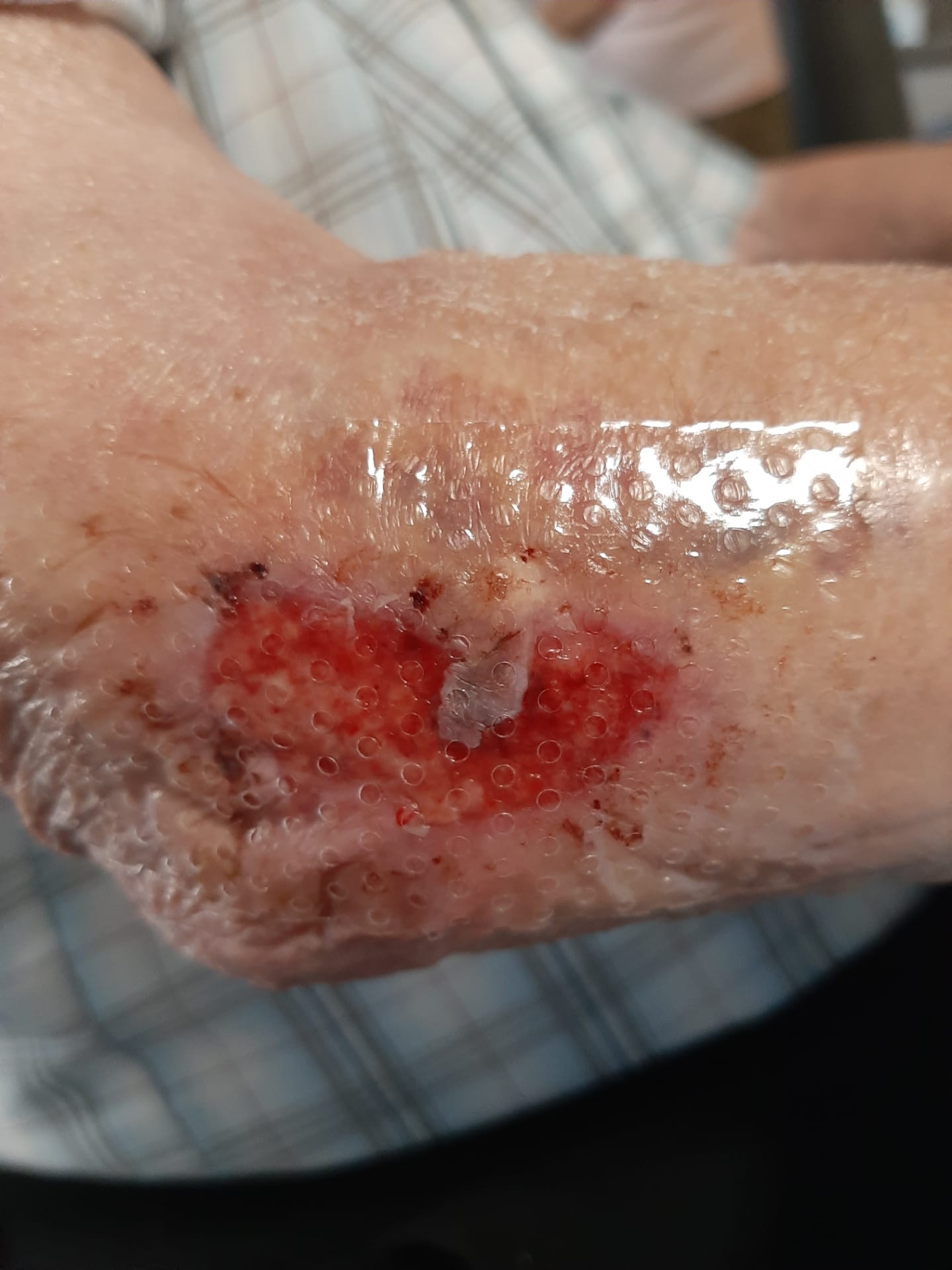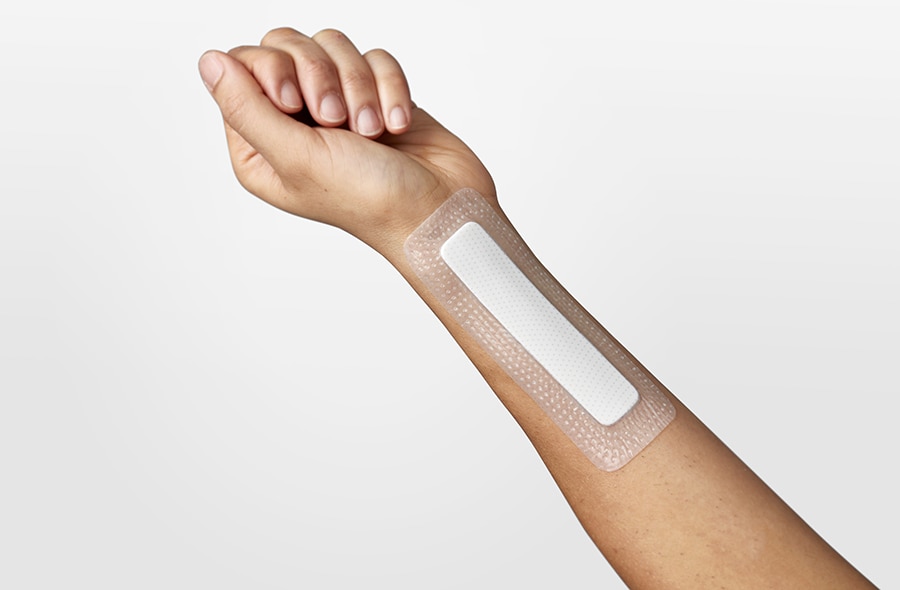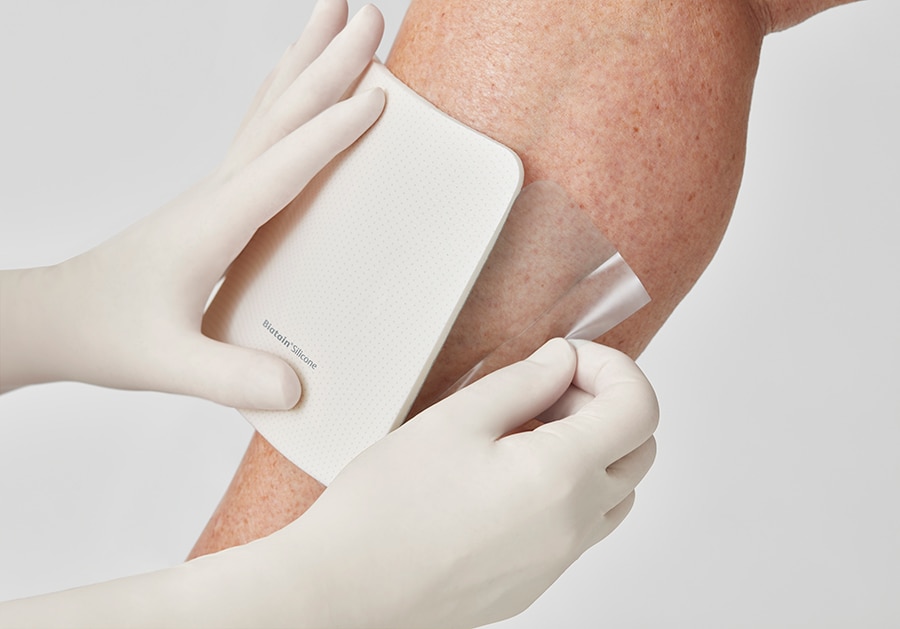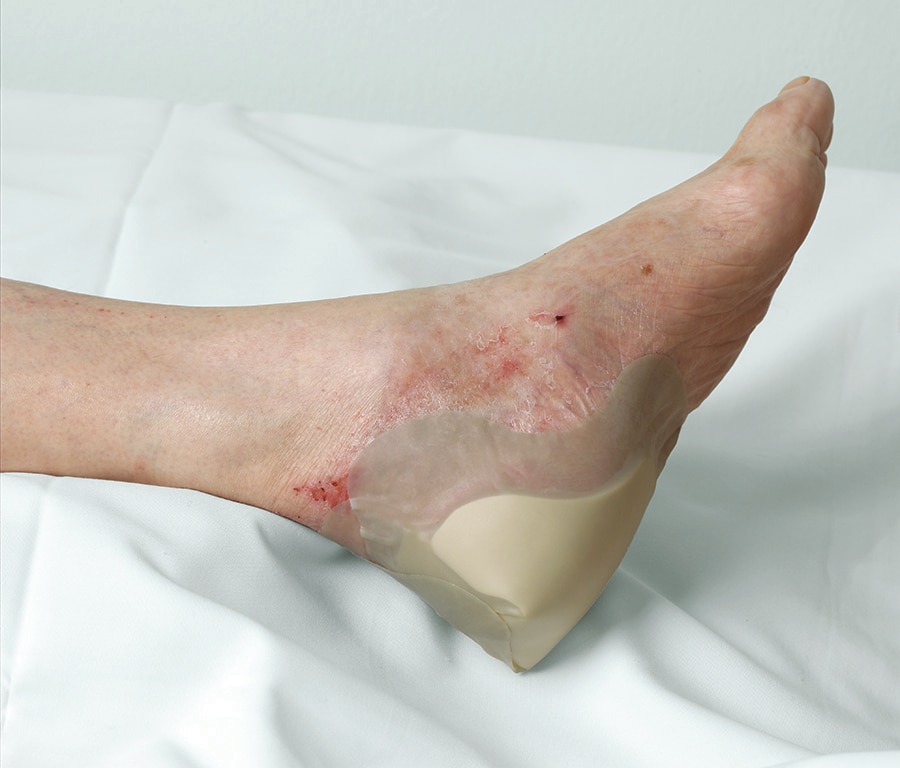
What is a contact layer?
Contact layer dressings – or contact layers – are thin, non-adherent sheets made of woven or perforated material. You place contact layers directly on the open wound bed to protect the tissue from direct contact with the wound dressing.
There are two types of contact layers: traditional and silicone.
Traditional contact layers are typically made of gauze or mesh impregnated with a substance, such as petroleum, iodine or bismuth.
Silicone contact layers are coated with soft silicone as an adhesive, which is either on one or both sides of the dressing.1
When should you use a contact layer?
You can use a contact layer on:
- wounds in the granulation phase of the healing process. Granulation tissue is fragile and needs to be protected. Using a silicone contact layer will enable you to monitor the wound’s healing progress without removing the dressing and disturbing the tissue.2
- wounds with fragile periwound skin. Because silicone contact layers are gentle on the skin, they are well-suited for wounds where the periwound, or surrounding, skin is fragile.
- wounds with moderate to heavy exudate levels. Since some silicone contact layers allow exudate to pass through the dressing, you can use them on wounds with moderate to heavy exudate levels.3
- superficial abrasions. These types of wounds can be very painful. Using a silicone contact layer can help reduce pain and trauma associated with dressing changes.
- ulcers and chronic or acute lesions with various levels of exudate. On these wounds, you should use a contact layer together with a secondary absorbent dressing.2
- dry wounds with black necrotic tissue. For this type of wound, you can use a low adherent contact layer to cover the area and separate it from adjacent tissues. In these cases, you would want a contact layer that does not retain moisture or rehydrate the wound.3
You can use contact layers as a primary dressing, applying a secondary dressing for extra absorption, if needed. You can also use them as a protective layer on non-exuding wounds or fragile skin.
References
- https://www.woundsource.com/product-category/dressings/contact-layers
- von Hallern B. MEDIZIN & PRAXIS »IN FOCUS - WOUND BED AND WOUND EDGES« 2020
- World Union of Wound Healing Societies (WUWHS) Consensus Document. Wound exudate: effective assessment and management.





